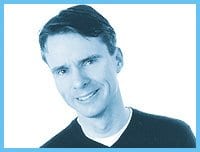Thank God, it’s over.
In the week leading up to Pride, I asked every person I met a single, simple question: What are you supposed to do for Pride if you don’t want to go to a giant party and you don’t want to get pissed?
Not too many good answers to that one.
As someone who hates noise, crowds and sensory overload, Pride has become my bête noire. Like Christmas it’s less an event than a series of stifling social conventions. Have fun, get laid, dress flashy – these are the stern injunctions of the Pride world and lord help you if you don’t obey them.
For years I’ve been threatening to write The Introvert’s Guide To Surviving Pride and every year I fail because, frankly, I don’t have many positive suggestions. I used to suggest Cheap Queers at Buddies, because its loosey-goosey casualness was a nice antidote to the overall sense of pressured regimentation. But of course it’s no longer at Buddies. It was exiled two years ago, first to College St and then to the further reaches of Queen West. I guess it wasn’t loud enough.
For all the talk of diversity, Pride is aimed at a very narrow demographic: people who like their music loud and their fun manufactured in easily consumed doses. No surprise there. That’s where the money is and the promoters have flocked to exploit it.
But for anyone who yearns for something simpler, quieter and more intimate, Pride is a bore and an imposition, a loud, crass tribute to the kind of “fun” only an advertiser could love, narrow and easily marketed.
Strip the event of its supposed sexual glamour, and Pride is Tastes Of The Danforth with better balloons. Just another lure for the tourist trade.
Admittedly, it was fun watching the Americans stroll into town. You could see them as early as Thursday night, sauntering up Yonge St, blinking painfully at the Zanzibar, all neatly pressed, tucked and belted, museum-quality studies in classic preppy style.
But I doubt many of those smiley-faced folks were too terribly interested in Toronto as a city or a community. As many have remarked before me, Toronto’s Pride has become just another stop on the circuit, a sort of Thailand for adults.
Saturday night on Church St, I encountered an American woman who said her gay friends always stay at the Delta Chelsea in a room overlooking Remington’s in the hope that a crack will appear in the roof of the strip bar and naked flesh emerge. It was a joke and also of course, the truth. Apparently, they don’t have that kind of service in the States.
It’s nice to know we can ameliorate everyday ordinary human unhappiness with such simple means. Naked penises – who knew they were at a premium?
But to the jaded among us, a strip bar is not sufficient reason to leave the house, let alone endure vast hordes of people drifting aimlessly up and down a somewhat tatty downtown street.
Let’s forget the earnest guff about how terrific Pride is for young people or newbies or small-towners – so affirming, so validating. It’s not 1952, and claims for the therapeutic value of Pride are vastly overstated. Coming out happens first in the small of the mind not the heart of a crowd, and Pride’s propaganda effect is pretty limited. Two or three blocks off Church St, it doesn’t even exist.
Pride Saturday I skirted the circumference of the ghetto and saw few signs of gayness aside from a couple of minuscule signs in Chapters and the LCBO. One advertised a pile of gay books (not that they were identified as such), the other some sort of liquor promotion. Neither offered any explanation of “Pride” or why two massive commercial establishments should wish to be connected with it.
Worst of all, Pride seems both dated and constrictive, a solution to a problem that no longer exists. The festival dates from a time when straights denied not just our morality and our sanity, but our humdrum ability to enjoy even moderately happy lives. “There is no such thing as a happy homosexual,” said one infamous 1970s psychiatrist with an oracular bent.
Nobody believes that anymore, but we continue to act as though they did, naïvely insisting on our fabulous, fun-making abilities. I don’t doubt the accuracy of the claim so much as its usefulness. At this stage of the game, it just seems defensive. Most of us lead lives as dull as anyone else and donning a sequined G-string isn’t going to change that. If anything, the sort of flamboyant “fun” purveyed by Pride has become as constrictive as the conventions from which we sought to escape.
The day after Pride I was at Harbourfront for the Canada Day festivities. Pretty much the same deal as at Pride: massive crowds, free music. The difference it seemed, was in the tone. The Harbourfront folks weren’t trying to have fun, they simply were. Relaxed, casual, strolling about. Maybe one day, we’ll be as cool about ourselves.
We’re here, we’re queer, it’s about time we got used to it.

 Why you can trust Xtra
Why you can trust Xtra


